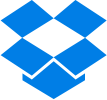Collaboration is “when members of an inclusive learning community work together as equals to assist students to succeed in the classroom” (Powell). Friend and Cook (1992, pp. 6-28) explain that collaboration has six defining characteristics: (a) collaboration is voluntary, (b) collaboration requires parity among participants, (c) collaboration is based on mutual goals, (d) collaboration depends on shared responsibility for participation and decision making, (e) individuals who collaborate share their resources, and (f) individuals who collaborate share accountability for outcomes.
What is collaboration?
Although this is a fine and detailed definition, sometimes it is important to simplify an often well-known, but misunderstood concept.
Why is collaboration important?
Collaboration is such an important skill, both for students and adults, because we live in a world of design-thinking. Although human beings are social creatures, collaboration isn’t necessarily easy for everyone; however, true innovation comes from being a part of a learning community where there is time to think critically, and re-energize our love of learning. Whereas some teachers are used to working in isolation because they are a content specialist, effective schools and organizations establish a culture of collaboration where students are the responsibility of all teachers, not just one. Collaboration improves teacher efficacy, through professional development and learning opportunities, which in turn, improves student performance. Having a professional, innovative culture reduces teacher burn-out because teachers are willing to share with each other, support each other, and learn together.How does one foster collaboration?
Fostering collaboration comes from a structured process for exchanging ideas and insights, content and curriculum, with colleagues. So, how does one design structures that support collaboration? Design principles and strategies for collaboration and collaborative leadership are numerous; however, here are the three I find most important: (a) environment, (b) structure, and (c) purpose. Creating an environment of trust is the first priority for anyone wanting to collaborate. The ability to compromise will be difficult for some; however, in order to obtain a common goal, teachers must be unified in a single purpose. Collaborative teachers must agree to this purpose before they can
proceed.

Having a structure for collaboration is the best way to ensure that you and your teammates are able to continually collaborate across a variety of topics/problems. Luckily, educational technology tools are built for cooperative learning and collaboration. Honestly, I can’t remember what collaboration looked like before Google Apps. I think we used colorful sticky notes, index cards, markers, and chart paper. The great thing about Google Apps for Education (GAFE) is that you can create online documents, presentations, drawings, forms, calendar events, and spreadsheets that you can share with other people not in the same room or building or country, all editing simultaneously. Your content is automatically saved and stored for remote access from any device. If necessary, you can also export an content you create online and use it offline. Google Hangouts allows you to bring remote groups of people together to communicate and collaborate. In the end, remember the importance of everyone working toward a shared goal. With that in mind, it doesn’t matter which digital tool you use. In fact, it might be worth breaking out the markers and chart paper in order to reconnect with your colleagues!
Resources
In case you are on the lookout for new tools for collaborating, here are a few of my favorite. These free applications can enable a variety of collaborative teaching and learning.
 Slack
Slack
Slack is an online communication tool that allows you to collaborate with your teammates. You can follow various conversations that are sorted into “channels”, as well as integrate other services (e.g.: IFFTTT, Dropbox).
Dropbox is an online tools that allows people to access various documents, files, and articles. You can access Dropbox from any browser by creating “shared folders” that are visible to every team member who has access. Although I prefer Google Drive to Dropbox, I have used both and can appreciate the ease of creating a new folder on your computer, inviting others to view, and having it appear on your teammates’ computer.
 Realtime Board
Realtime BoardRealtime Board an online whiteboard for visual team collaboration. Collaborators can add pictures, flowcharts, drawings, videos, sticky notes, office documents and Google Drive files on an unlimited white canvas. Teachers can discuss any posted content with colleagues as they are brainstorming and co-creating group projects.
CCSD Instructional Technology Blog
Padlet is a digital bulletin board, which lets you "post" notes that can be rearranged, organized, collected, and shared. Images, links, and other information can be inserted into the posted notes. This is a great tool for creating exit tickets or other formative check-ins with students.
CCSD Tech Blog Posts: Collaboration
- Tuesday Tech Tip: Using Schoology with GoogleDrive
- Tuesday Tech Tip: Geeking Out with Google Slides
- Tuesday Tech Tip: Google Classroom
- Tuesday Tech Tip: Working with Schoology & Google Classroom
For more information, here are some fantastic TEDx talks by Zak Olmsted Heimerl and Jim Tamm.
References
Anderson-Butcher, D., Lawson, H., Bean, J., Boone, B., Kwiatkowski, A., et al. (2004). Implementation guide: The Ohio community collaboration model for school improvement. Columbus, OH: The Ohio Department of Education.Friend, M., & Cook, L. (1992). The new including: How it really works. Instructor, 101(7), 30-36.
Walker, E. N. (2012). Building mathematics learning communities: Improving outcomes in urban high schools. New York: Teachers College Press.



No comments:
Post a Comment